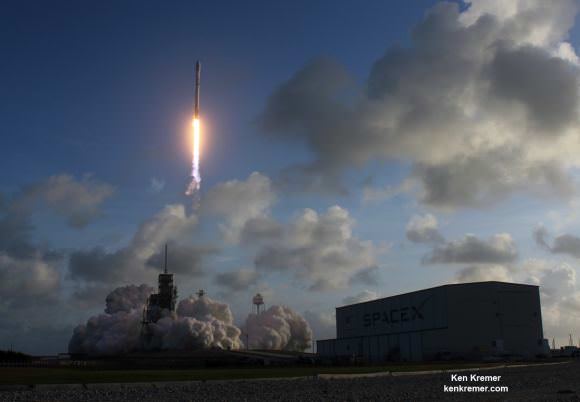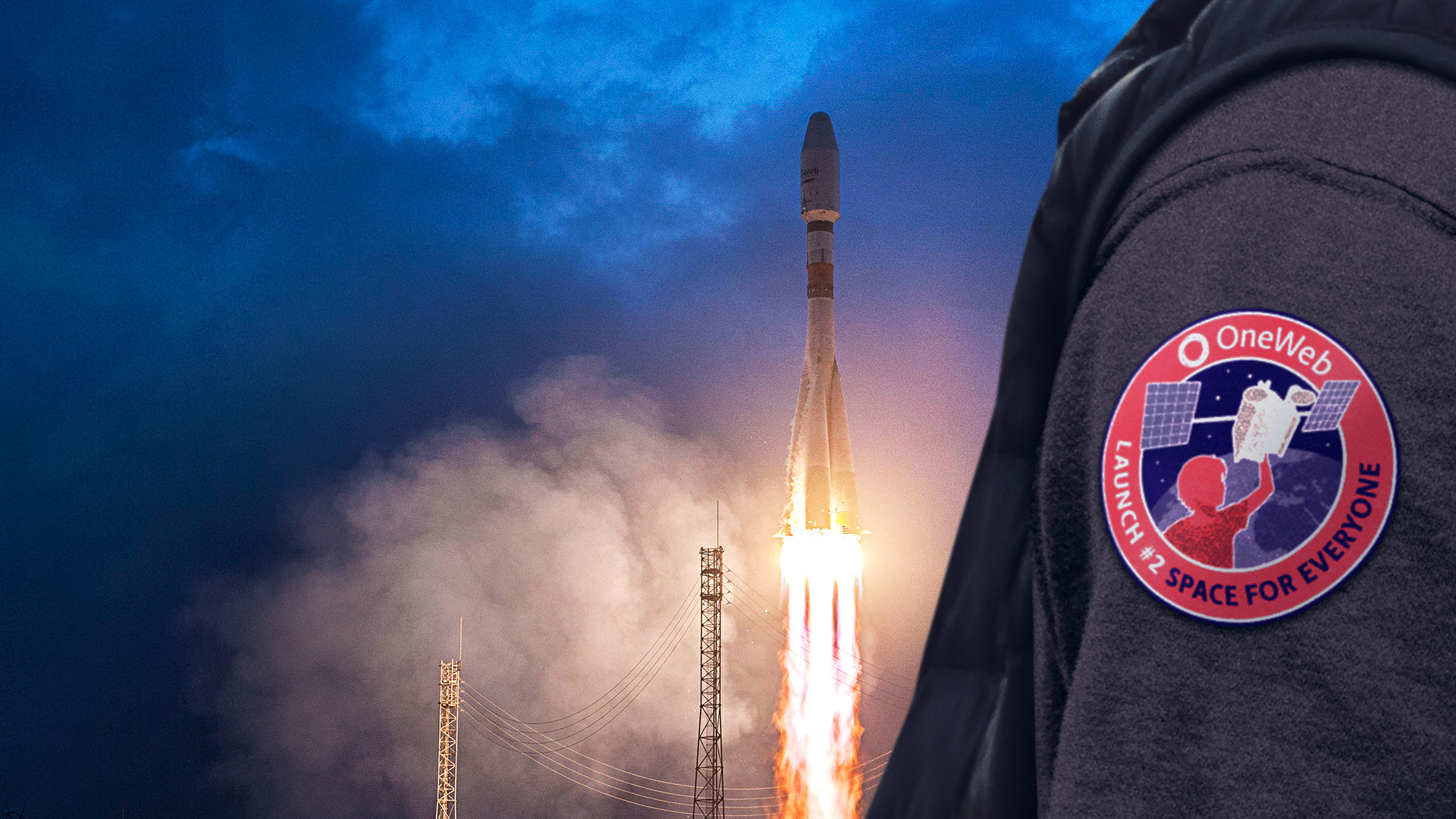SpaceX has been garnering all the headlines when it comes to satellite constellations. Their Starlink system will eventually have thousands of tiny satellites working together to provide internet access, though only 242 of them have been deployed so far. But now another company is getting on the action: OneWeb.
Continue reading “Here Comes the Next Satellite Constellation. OneWeb Launches 34 Satellites on Thursday”This is the Year Internet From Space Gets Really Serious

Between 2005 and 2017, the number of people who are digitally connected increased by a factor of three and a half. In other words, the number of people with internet access went from just over 1 billion to about 3.5, from about 15% to roughly half the world’s population. And in the coming decade, it is estimated that roughly 5 billion people – that’s 70% of the world’s population – will have internet access.
Much is this growth is powered by new ways of in which internet services are being provided, which in the coming years will include space-based internet. In 2018 alone, eight new constellations of internet satellites will begin deployment to Low-Earth Orbit (LEO) and Medium-Earth Orbit (MEO). Once operational, these constellations are expected to not only increas broadband access, but also demonstrate the soundness of the business model.
For instance, SpaceX will be launching a prototype internet satellite this year, the first of a planned constellation of 4,425 satellites that will make up its Starlink Service. As part of Elon Musk’s vision to bring internet access to the entire globe (one of many he’s had in recent years!), this constellation will be deployed to altitudes of 1,110 to 1,325 km (685-823 mi) – i.e. within LEO – by 2024.
Telecom and aerospace giants Samsung and Boeing are also sending internet satellites to orbit this year. In Samsung’s case, the plan is to begin deploying the first of 4,600 satellites to LEO by 2028. Once operational, this interconnected constellation will provide a 200-GB per month service in the V band for up to 5 billion users. Boeing has similar plans for a 2,956 constellation that will provide enhanced broadband (also in the V band).
The first part of this system will consist of 1,396 satellites deployed to an altitude of 1,200 km (746 mi) within the first six years. Others companies that are getting in on the ground floor of the space-based internet trend include OneWeb, Telesat LEO, SES O3B, Iridium Next and LeoSat. Each of them have plans to send between a few dozen and a few hundred satellites to LEO to enhance global bandwidth, starting this year.
Iridium, LeoSat, and SES O3B have all entered into partnerships with Thales Alenia Space, a leading designer of telecommunication and navigation satellites as well as orbital infrastructure. Thales’ resume also includes providing parts and services for the International Space Station, as well as playing major role in the development of the ATV cargo vessel, as part of the NASA/ESA Cygnus program.
In conjunction with Thales and Boeing, SES 03b plans to use its proposed constellation of 27 satellites to bridge the global digital divide. In the past, O3b was in the practice of providing cruise ships with wireless access. After merging with SES in 2016, they expanded their vision to include geosynchronous-Earth-oribit and MEO satellites. The company plans to have all its satellites operational by 2021.
Iridium is also partnering with Orbital ATK, the commercial aerospace company, to make their constellation happen. And whereas other companies are focused on providing enhanced bandwidth and access, Iridium’s main goal is to provide safety services for cockpit Wi-Fi. These services will be restricted to non-passenger flights for the time being, and will operate in the L and Ka bands.
And the there’s LeoSat’s plan to send up to 108 satellites to LEO which will be interconnected through laser links to provide what they describe as “an optical backbone in space about 1.5 times faster than terrestrial fiber backbones”. The first of these small, high-throughput satellites – which will deliver services in the Ka-band – is scheduled to launch in 2019.
Similarly, Telesat LEO hopes to create an internet satellite network to provide services that are comparable to fiber-optic internet connections. According to the company, their services will target “busy airports; military operations on land, sea and air; major shipping ports; large, remote communities; and other areas of concentrated demand.” The company plans to deploy two prototype satellites to LEO later this year, which were developed in conjunction with Airbus’ SSTL and Space Systems Loral.
With all the developments taking place these days, it does seem like the dream of a global internet (much like the Internet of Things (IoT) is fast becoming a reality. In the coming decades, we may look back at the late 20th and early 21st centuries the same way we look at the stone ages. Compared to a world where almost everyone has internet access and can download, upload, stream and surf, a world where only a few million people could do that will seem quite primitive!
Featured: Aviation Week, Popular Mechanics
High-Speed Space Broadband for Everyone. SpaceX Details their Plans to Launch 1000s of Internet Satellites

SpaeeX and Tesla-founder Elon Musk has made some rather bold promises over the years. In addition to building a fleet of reusable rockets, an Interplanetary Transport System, colonizing Mars, and revolutionizing transportation, he has also made it clear that he hopes to provide worldwide broadband access by deploying a “constellation” of internet-providing satellites.
In November of 2016, SpaceX filed an application with the Federal Communications Commission (FCC) for a license to operate this constellation of non-geostationary satellites (NGS). And earlier this week, the US Senate Committee on Commerce. Science, and Transportation convened a hearing to explore this proposal for next-generation telecommunications services.
The hearing was titled, “Investing in America’s Broadband Infrastructure: Exploring Ways to Reduce Barriers to Deployment”. In the course of things, the committee heard from representatives of government and industry who spoke about the best ways to offer streamlined broadband access (especially in rural areas), the necessary infrastructure, and how to encourage private investment.

Of those the committee heard from, Ms. Patricia Cooper – VP of Satellite Government Affairs for SpaceX – was on hand to underscore the company’s vision. As she stated:
“SpaceX sees substantial demand for high-speed broad band in the United States and worldwide. As the Committee is aware, millions of Americans outside of limited urban areas lack basic, reliable access. Furthermore, even in urban areas, a majority of Americans lacks more than a single fixed broadband provider from which to choose and may seek additional competitive options for high-speed service.”
Cooper also cited recent FCC findings, which indicated that millions of Americans lag behind other developed nations in terms of broadband speed, access, and price competitiveness. Basically, thirty-four million American citizens do not have access to 25 megabits per second (“Mbps”) broadband service while 47% of students in the US lack the connectivity to meet the FCC’s short-term goal of 100 Mbps per 1,000 students and staff.
This is at at a time when global demand for broadband services and internet connectivity continue to grow at an unprecedented rate. According to a report prepared by Cisco in 2016 – titled “White paper: Cisco VNI Forecast and Methodology, 2015-2020” – global Internet Protocol (IP) traffic surpassed the zettabyte threshold. In other words, over 1,000 billion gigabytes of data were exchanged worldwide in a single year!

By 2020, that figure is projected to double, global fixed broadband speeds are expected to nearly double, and the number of devices connected to IP networks is projected to outnumber the global population by a factor of about 3 to 1. To remedy this situation, and bring broadband access in the US up to the average for developed nations, SpaceX plans to launch 4,425 broadband satellites.
These will begin being launched in 2019 aboard the company’s fleet of Falcon 9 rockets. The launches will continue until they have reached full capacity, which is expected to be by 2024. As Cooper outlined it:
“Later this year, SpaceX will begin the process of testing the satellites themselves, launching one prototype before the end of the year and another during the early months of 2018. Following successful demonstration of the technology, SpaceX intends to begin the operational satellite launch campaign in 2019. The remaining satellites in the constellation will be launched in phases through 2024, when the system will reach full capacity with the Ka- and Ku-Band satellites. SpaceX intends to launch the system onboard our Falcon 9 rocket, leveraging significant launch cost savings afforded by the first stage reusability now demonstrated with the vehicle.”
Other details included the operational altitudes of the satellites – ranging from 1,110 to 1,325 km (690 to 823 mi) – as well as the necessary infrastructure on the ground, which would include “ground control facilities, gateway Earth stations, and end-user Earth stations.” SpaceX has also indicated that it plans to deploy an additional 7.500 satellites that will operate at lower altitudes in order to boost broadband capacity in large population centers.
Naturally, there have to be those people who hear words like “satellite constellation” and immediately think “space junk”. Certainly, the deployment of between 4,425 and 11,925 satellites in the coming years will lead to increasing concerns about “orbital clutter”. Especially when other telecommunications providers are seeking to get in on the trend – a good example being Google’s Project Loon.

And while the subject did not come up during the hearing, it will be unavoidable in the coming years and decades. But in the meantime, the idea of bringing internet access to the world – particularly the developing regions of the world where the infrastructure may not otherwise exist – has the potential of being a great social leveler. In the coming decades, it is expected that internet use will reach proportions unheard of a few decades ago.
By 2020 alone, it is estimated that the number of Internet users will reach almost 5 billion – or roughly half the world projected population of 10 billion. This represents an almost threefold increase from the number of internet users in 2010 (1.7 billion) and an almost 14 fold increase since 2000 (360 million). As such, any investment that will help ensure that this growth occurs more equally across geographic and social barriers is certainly a good one.
The committee also heard testimony from Larry Downes, the Project Director of the Georgetown Center for Business and Public Policy, and Brian Hendricks – the head of Technology Policy & Public Affairs for the Americas Region for Nokia. In addition to addressing the current sate of broadband internet in the US, they made multiple recommendations on how the non-geostationary internet satellite industry could be fostered and developed.
You can read the transcripts and check out the live webcast by going to the hearing page.
Further Reading: US SCCST

